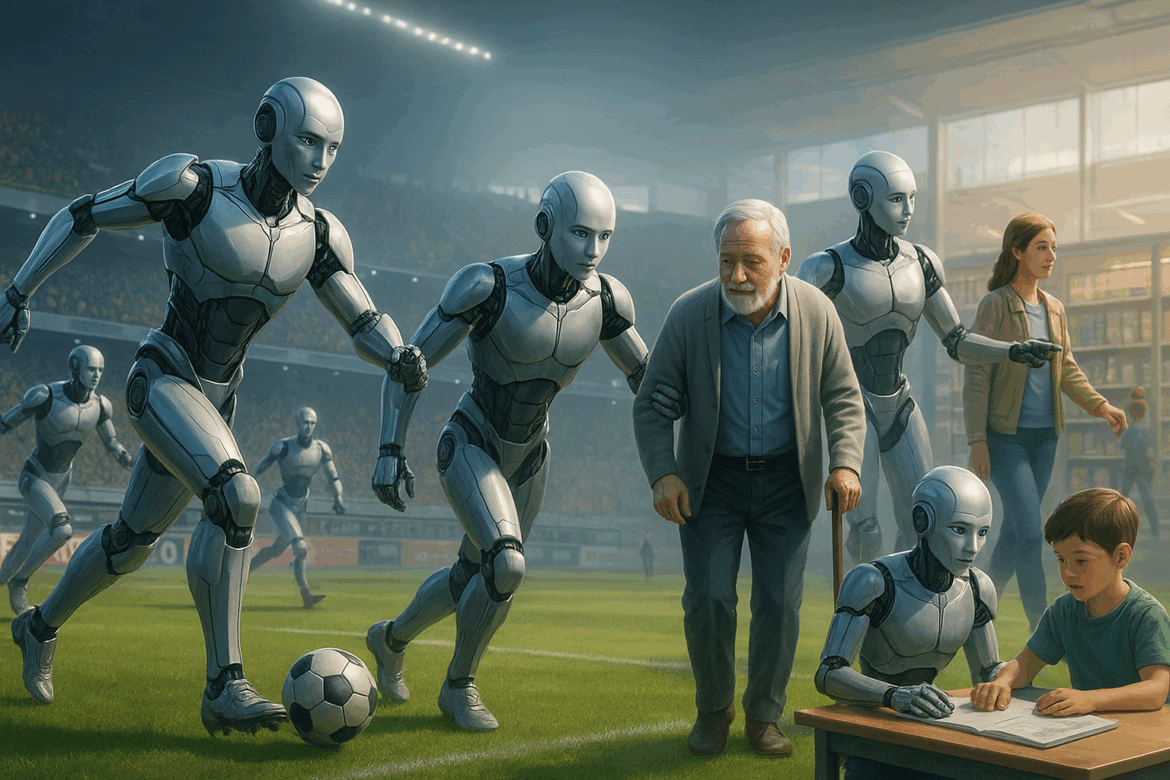🤖 Humanoid Robots: What Are They?
Humanoid robots mimic human appearance and movement. They have a head torso, arms, and legs, which enable them to function in spaces created for humans. Unlike standard robots that often do one job in a set place humanoid robots can handle various tasks and adjust to human settings.
These robots aim to help people, carry out complex jobs, and work safely with humans. Progress in AI and machine learning allows these robots to gain knowledge from their surroundings and boost their performance as time goes on.
🏆 Humanoid Robot Competitions
Humanoid robot competitions stand out as one of the most thrilling advancements in robotics. Nations such as China, Japan, and Germany have set up events where robots engage in soccer matches, ping pong games sprinting contests, and navigate obstacle courses.
These competitions serve a purpose beyond mere entertainment—they extend the limits of robotics technology. Engineers leverage these events to evaluate robots’:
- Balance – Can the robot maintain its upright position during rapid movement?
- Coordination – Can it synchronize its arm and leg movements ?
- Agility – Can it adapt to environmental changes?
Through competition, robots enhance their ability to carry out complex tasks, which in turn boosts their real-world applications.
⚡ Challenges Humanoid Robots Face
Despite their impressive nature humanoid robots continue to encounter several obstacles:
- Balance and Mobility – They struggle to walk, run, or turn without toppling over.
- Precision and Coordination – They find it challenging to move multiple joints in unison for smooth actions.
- Energy Consumption – These robots need substantial power to carry out activities non-stop.
- Adaptability – They still have trouble handling unexpected scenarios such as uneven terrain.
Even with these hurdles, AI and machine learning help robots learn from their errors, enhance their movements, and adjust to new tasks more than ever.
🌎 Real-World Applications of Humanoid Robots
Humanoid robots aren’t just for contests—they now have an impact on everyday situations:
- Healthcare: Robots help old or disabled folks move around, carry stuff, or do daily tasks.
- Customer Service: Robots welcome visitors, give info, or show people around airports, hotels, and malls.
- Education: Robots teach kids coding, robotics, and STEM topics in a hands-on way making learning exciting.
- Disaster Response: Robots go into risky areas, check dangerous places, and even pitch in with rescue work without putting people in harm’s way.
These uses show
